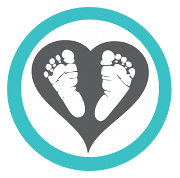Late preterm birth (defined as 34-37 weeks) is on the rise in the U.S., now making up 71% of all preterm births. Many of these are preventable, but they are associated with increased problems.
In some cases this early delivery is a necessary prevention of problems. Pregnancy dating difficulty often results in elective induction or cesarean section births because these aren't always accurate, especially those estimates and ultrasounds done later in pregnancy. An early dating ultrasound in the first few weeks is considered most accurate and measurement of the mother's abdomen and by ultrasound are notoriously wrong.
The healthiest babies with the lowest risks (even for the first year of life) are born between 39 and 41 weeks completed gestation. Anything earlier increases their odds for a myriad of problems including breathing difficulties, feeding problems and jaundice. These babies are also at increased risk for readmission to the hospital. Breastfeeding is often interrupted, sometimes resulting in a baby being deprived of the best nourishment out there at a time when they need it most. Many of these late preterm babies require NICU or special stay nursery care which can cost 10 times the charges in a normal, uncomplicated delivery at term.
As an example of what is happening during those last few weeks of gestation, the baby's brain at 35 weeks weighs only2/3 of what it will weigh at39-40 weeks. See more here.ACOG (American College of Obstetrics and Gynecology) advises against any elective deliveries prior to that time without clear risks which must be circumvented such as maternal or fetal well-being (high blood pressure, pre-eclampsia, congenital malformations, cord or placental insufficiency, etc.) . Because of dating errors sometimes when we think we are dealing with a baby at 37 - 38 weeks, it could be that the baby is actually 35 - 36 weeks and behavior is like that of a preemie as opposed to a term baby.
Consequences of Late Preterm DeliveryNo pregnant woman enjoys the last few weeks of pregnancy and most would jump at the chance to deliver early if they feel the baby would be OK. And, in many cases, the baby is OK, but in far too many, the baby is not ready for life outside the womb. Cesarean delivery rates are also increased when an elective induction is performed because once the membranes are ruptured, infection risks necessitate delivery one way or another. The first c-section often determines future deliveries. This could mean increased risks because multiple c-sections and VBAC deliveries are both associated with more complications than vaginal deliveries. So this first one is a critical decision not to be entered into lightly, even when sorely tempted. Asking a pregnant woman if she wants to have the baby at her (or her doctor's) convenience is not the best way to make a decision with possible long-term adverse consequences.
• Temperature instability
• Hypoglycemia
• Breathing difficulties
• Feeding difficulties
• Jaundice
• Sepsis
• Increased neonatal and infant mortality
• Increased NICU use and readmission
• Increased cost
The March of Dimes suggests asking hard but important questions.
If your doctor or CNM recommends delivery before 39 completed weeks, ask these questions about induction or elective c-section:
- Is there a problem with my health or the health of my baby that may make me need to have my baby early?
- Can I wait to have my baby until I'm closer to 40 weeks?
- Why do you need to induce my labor?
- How will you induce my labor?
- Will inducing labor increase the chance that I'll need to have a c-section?
- Why do I need to have a c-section (if applicable)?
- What problems can a c-section cause for me and my baby?
- Will I need to have a c-section in future pregnancies?
- If I want more children beyond one or two, how will a c-section now affect this?
If you are the one pushing for an early delivery due to discomfort, false labor pain, family concerns, grandma coming to town, etc. try to keep perspective about what is most important. The convenience now could be completely consumed by the inconvenience, stress and worry that comes when the baby ends up in trouble because he/she was just not quite "done" yet. Even grandma will be happier with a healthy grandchild and baby's mom, even if it is a little bit inconvenient.
More thoughts on induction here.






















No comments:
Post a Comment
This blog only reviews comments before posting to avoid hijacking. We will respond to comments Mon-Thurs but we are closed Fri-Sun and legal holidays.